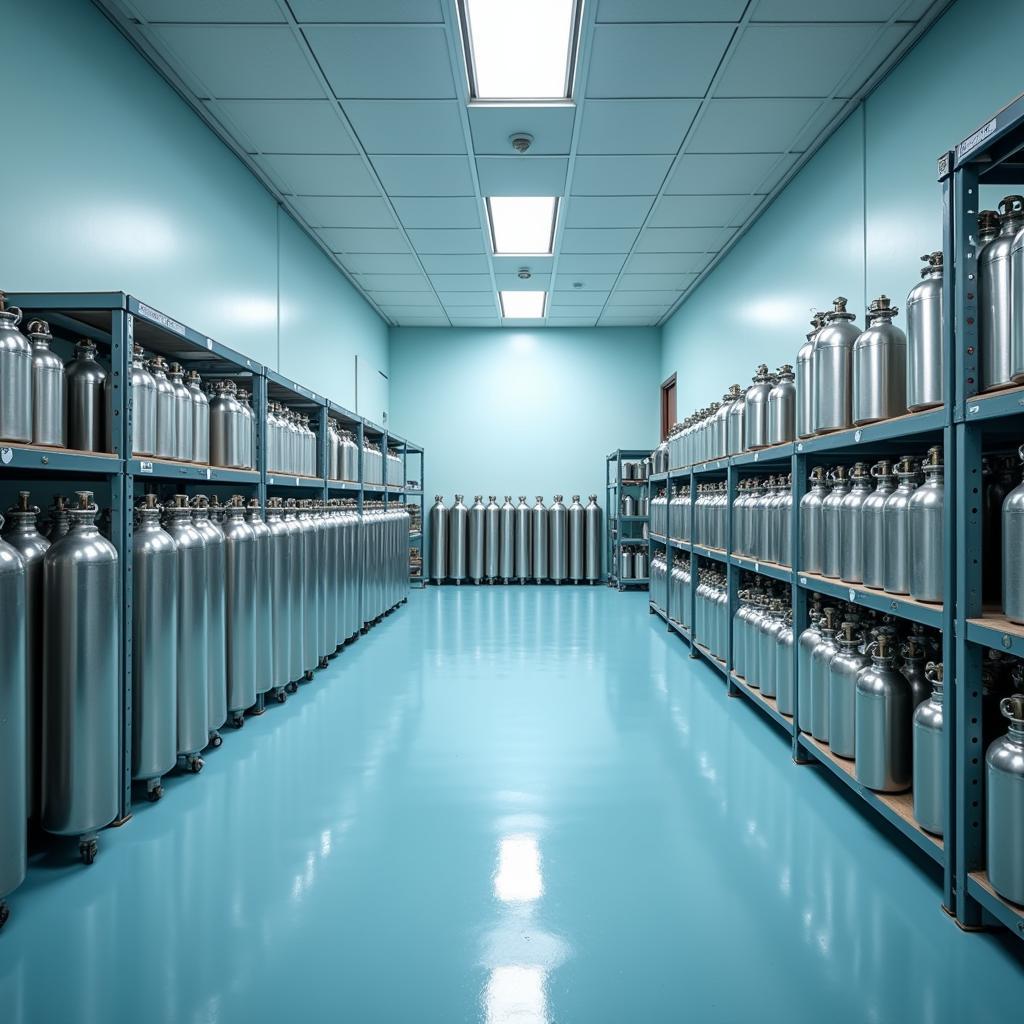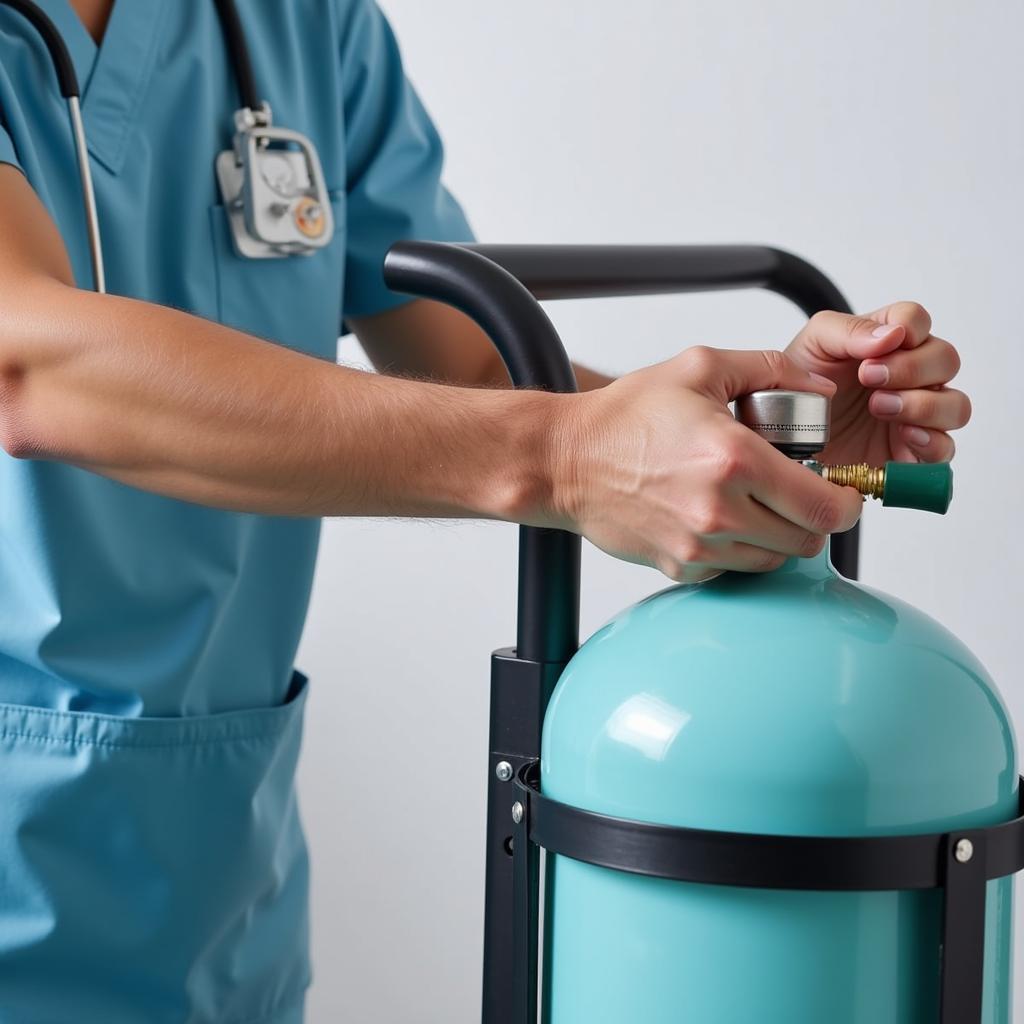Hospital Oxygen Cylinders are a critical component of modern healthcare, providing a vital lifeline for patients struggling to breathe on their own. These cylinders contain compressed oxygen, readily available for administration through masks, nasal cannulas, or ventilators. The reliable operation of these cylinders can mean the difference between life and death, underscoring their importance in medical facilities worldwide.
The Importance of Hospital Oxygen Cylinders
 Hospital Oxygen Cylinder Supply
Hospital Oxygen Cylinder Supply
Hospital oxygen cylinders are indispensable for a wide range of medical situations, including:
- Respiratory Distress: Patients experiencing breathing difficulties due to conditions like asthma, pneumonia, or COVID-19 often require supplemental oxygen.
- Surgery: Oxygen is routinely administered during and after surgical procedures to maintain adequate blood oxygen levels.
- Trauma and Emergencies: In emergency situations like heart attacks, strokes, or serious injuries, oxygen therapy can help stabilize patients.
- Chronic Conditions: Individuals with chronic lung diseases like COPD or cystic fibrosis may rely on supplemental oxygen for long-term respiratory support.
Types of Hospital Oxygen Cylinders
Hospitals utilize different types of oxygen cylinders to meet varying needs:
Size and Capacity
- Small Cylinders (E and D sizes): These portable cylinders are ideal for patient transport or for short-term use.
- Large Cylinders (H and K sizes): These stationary cylinders provide a larger oxygen supply and are commonly used in hospital rooms or for patients requiring higher flow rates.
Material and Durability
- Steel Cylinders: Traditional steel cylinders are durable but heavier.
- Aluminum Cylinders: Lighter than steel, aluminum cylinders offer improved portability.
Safety and Handling of Hospital Oxygen Cylinders
 Safe Handling of Oxygen Cylinders
Safe Handling of Oxygen Cylinders
Oxygen is a highly flammable gas, and proper handling of oxygen cylinders is crucial to prevent accidents:
- Storage: Store cylinders upright and secured in well-ventilated areas, away from heat sources and flammable materials.
- Transport: Use designated cylinder carts for safe transport, ensuring cylinders are secured to prevent falls or damage.
- Use: Open cylinder valves slowly and only when needed to avoid sudden pressure surges.
- Monitoring: Regularly check cylinder pressure gauges to ensure an adequate oxygen supply is available.
- Training: Hospital staff must receive proper training on the safe handling, storage, and use of oxygen cylinders.
Maintenance and Inspection
Regular maintenance is essential to guarantee the safety and functionality of hospital oxygen cylinders:
- Visual Inspections: Cylinders should be visually inspected for signs of damage, corrosion, or leaks.
- Hydrostatic Testing: Periodic hydrostatic testing assesses the integrity of the cylinder to withstand pressure.
- Valve Maintenance: Valves should be regularly inspected for proper function and lubricated as needed.
- Record Keeping: Maintain accurate records of all inspections, maintenance activities, and test results.
Oxygen Cylinder Supply Chain Management
Hospitals need a robust supply chain management system to ensure a constant supply of oxygen:
- Reliable Suppliers: Partner with reputable oxygen suppliers who can provide timely deliveries.
- Inventory Management: Implement inventory control measures to track cylinder stock levels and anticipate demand.
- Emergency Preparedness: Develop contingency plans to address potential disruptions in oxygen supply, especially during emergencies or natural disasters.
Innovations in Oxygen Therapy
- Oxygen Concentrators: These devices extract oxygen from the air, providing a continuous supply without relying on cylinders.
- Liquid Oxygen Systems: Hospitals may utilize bulk liquid oxygen systems for larger-scale oxygen needs, offering a more efficient supply chain.
- Remote Monitoring: Technology is emerging to remotely monitor oxygen cylinder pressure and alert staff when levels are low.
Conclusion
Hospital oxygen cylinders play a vital role in providing life-saving oxygen therapy to patients. Ensuring a safe, reliable, and well-maintained oxygen supply is non-negotiable for any healthcare facility. By prioritizing safety protocols, adhering to maintenance schedules, and embracing advancements in oxygen delivery, hospitals can continue to provide exceptional patient care and deliver this essential element of medical treatment.